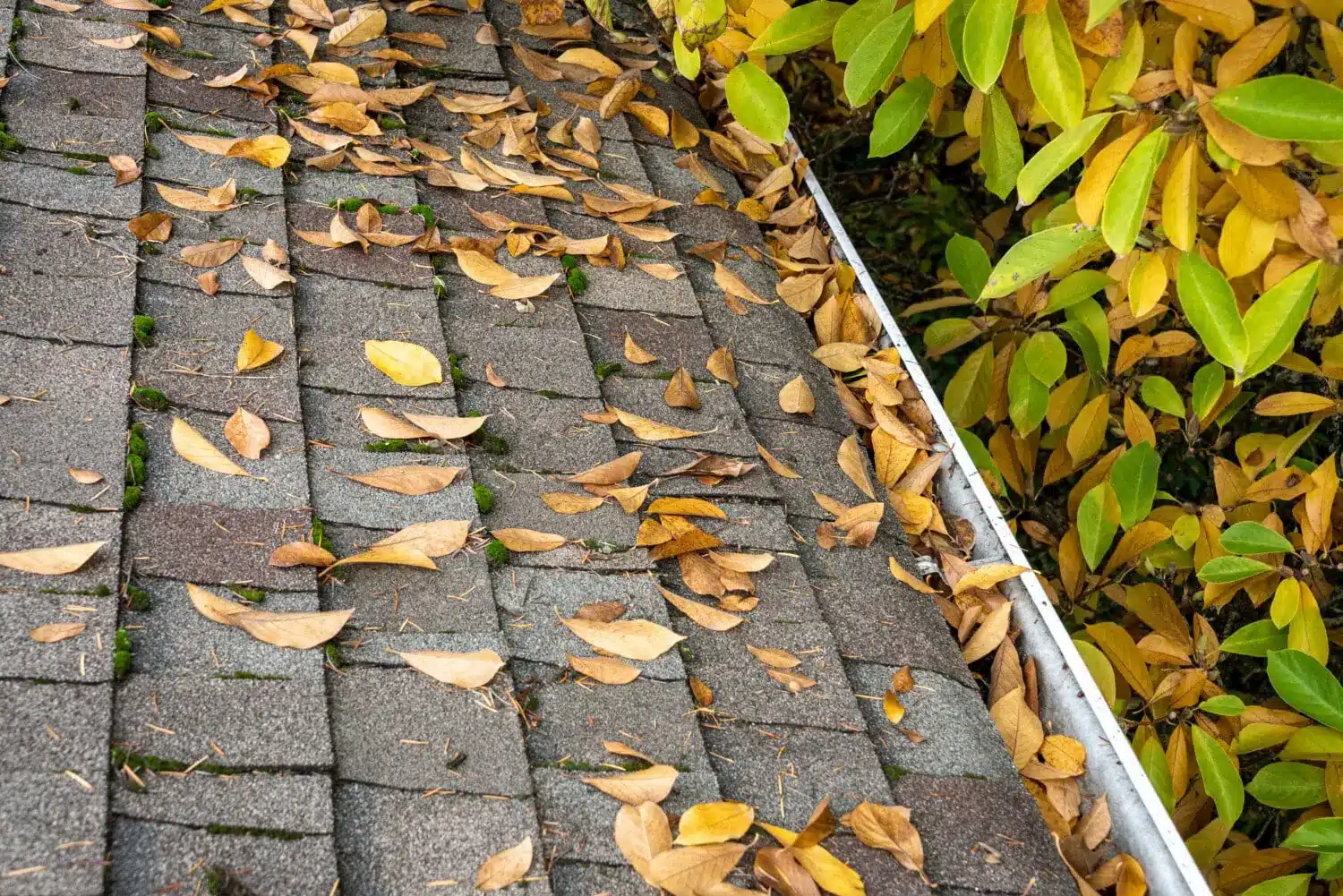
Fall is here with a cold winter around the corner. During this time of year, it’s important to consider residential roofing maintenance tips that will reduce ice dam formation while keeping your home at a consistent indoor temperature. Farmers’ Almanac is predicting a harsh winter ahead for 2025-2026, making roof preparation more critical than ever. Is your roof ready to protect what matters most? This Fall Roofing Guide will help you assess your home’s readiness for the season ahead.
Before freezing temperatures arrive, we’re sharing our top roofing maintenance tips and a checklist for fall. Use this checklist to examine the health of your roof, as this exterior element of your home is designed to protect what matters most.
Consider a GAF roofing system, metal roofing or a solar roof to get your home winter ready with Coastal Windows & Exteriors.
Farmers' Almanac Winter 2025-2026: 'Chill, Snow, Repeat' for New England
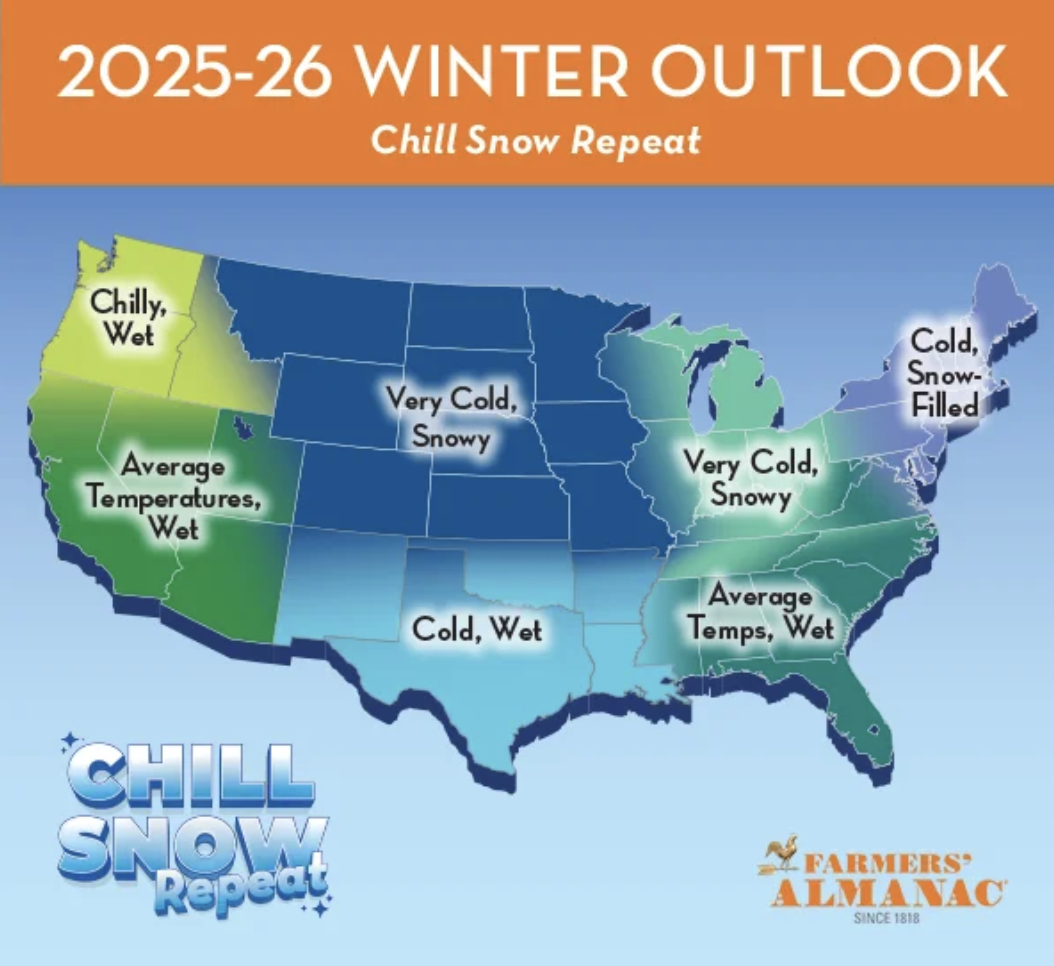
The Farmers’ Almanac has issued its forecast for the 2025-2026 winter season, warning New England residents to prepare for one of the coldest, snowiest winters in recent years. The publication predicts dramatic temperature swings, consistent cold snaps, and frequent snowstorms that will test every roof in the region. Here’s what to expect this winter:
- New England will experience some of the coldest temperatures in the entire country this season.
- Frequent snowstorms will blanket the region throughout the winter months.
- Atlantic Coast areas will see significant rain mixing with snow, creating challenging conditions.
- The forecast predicts “dramatic swings and widespread wintry weather” across New England.
- Residents from Minnesota to Maine should brace for “consistent cold snaps” all season long.
- January will bring a particularly intense cold snap requiring extra home protection.
- The Almanac urges everyone to “get ready to ‘chill, snow, repeat'” as winter becomes a “wild ride.”
- Being proactive with roof maintenance now prevents costly moisture damage during harsh winter conditions.
See Our Residential Roofing Projects in New England
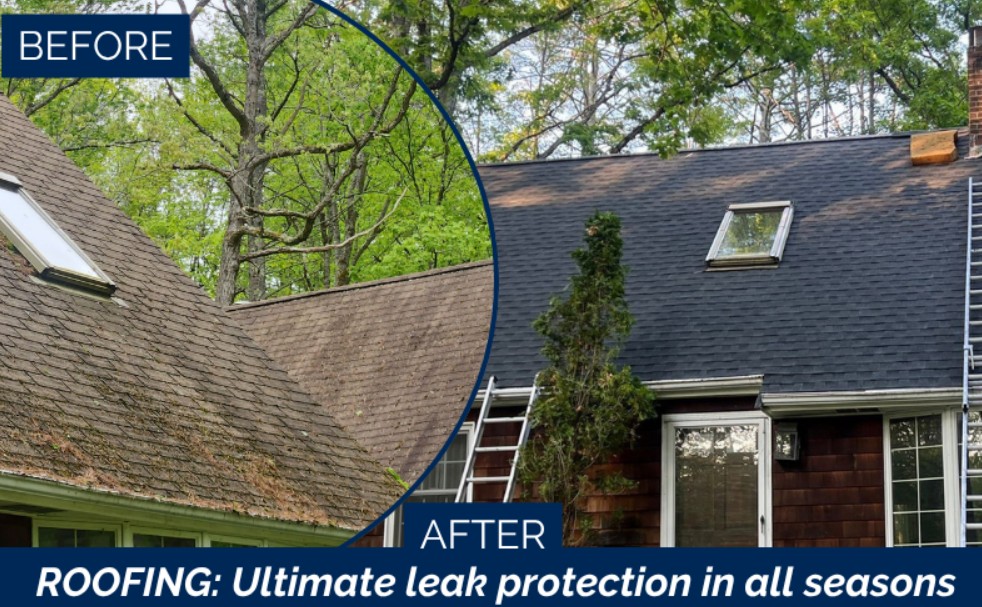
1. Dark and Dirty Patches on Roof
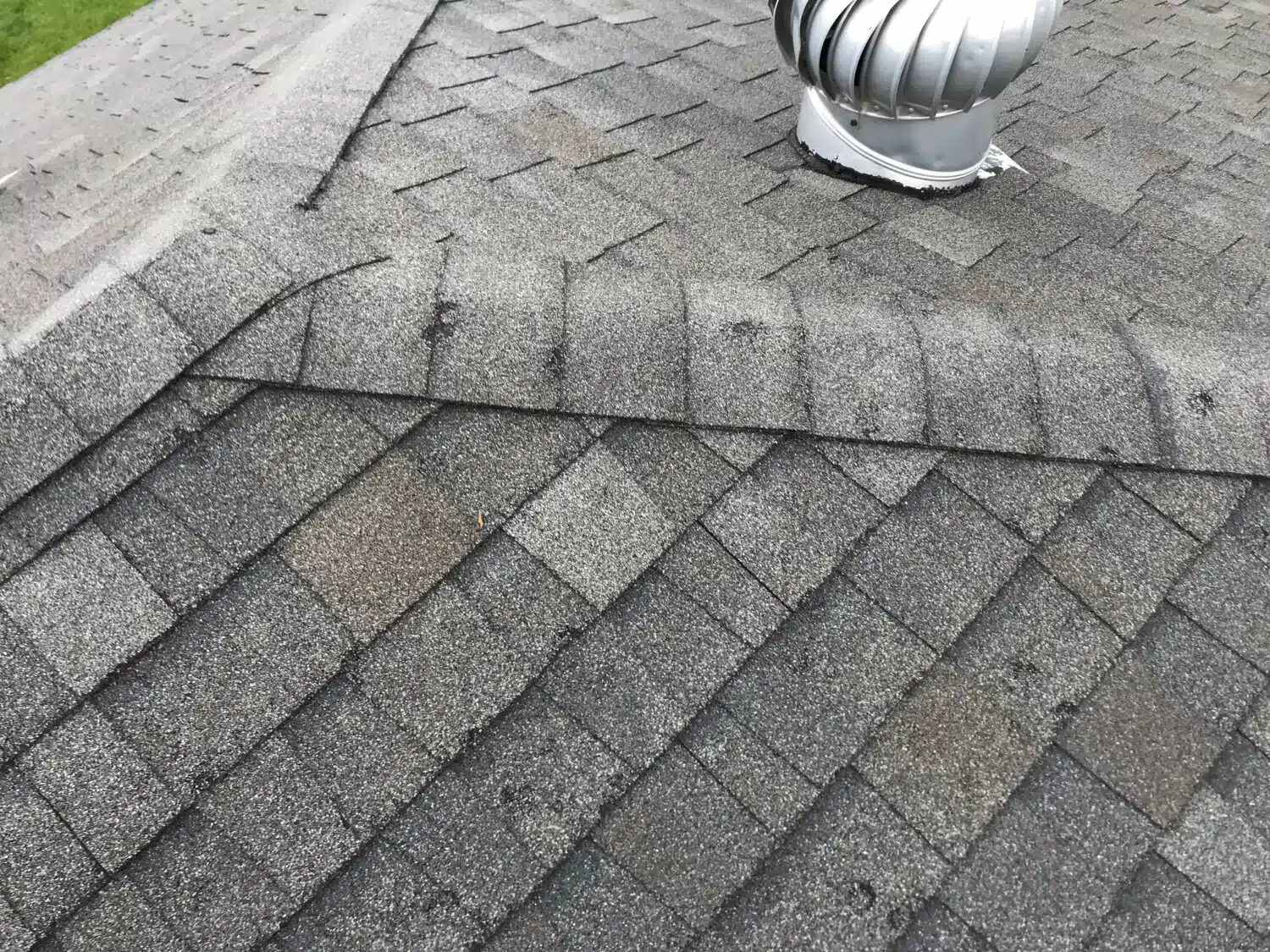
Need a new roof? We’ve installed countless GAF roofing systems throughout New England, equipped with superior protection against the elements and energy loss. These are just a few of our roof installation projects as roofing contractors in Massachusetts:
- Roof installation in Roslindale, MA
- Roof replacement in Beverly, MA
- Residential roofing in Norfolk, MA
- Roofing in Waltham, MA
Enjoy the peace of mind and protection that a new roof provides your family. Call Coastal Windows today for your free estimate!
2. Cracked and Missing Shingles

Autumn wind gusts and temperature swings cause shingles to expand and contract, leading to cracks and breakage. Fall storms can dislodge already compromised shingles, leaving gaps in your roof’s protection. These damaged shingles reveal underlying ventilation problems:
- Cracked shingles often indicate inadequate attic ventilation in your home.
- Poor ventilation traps heat and moisture in the attic space.
- Trapped heat causes shingles to fade, peel, and curl prematurely.
- Missing shingles leave your roof vulnerable to water infiltration and damage.
- Winter storms with high winds can dislodge compromised shingles from the roof.
- GAF roofing systems offer wind warranties, including no maximum wind speed coverage.
- Local roofing contractors ensure proper installation that withstands New England weather.
3. Moldy Gutters and Soffit
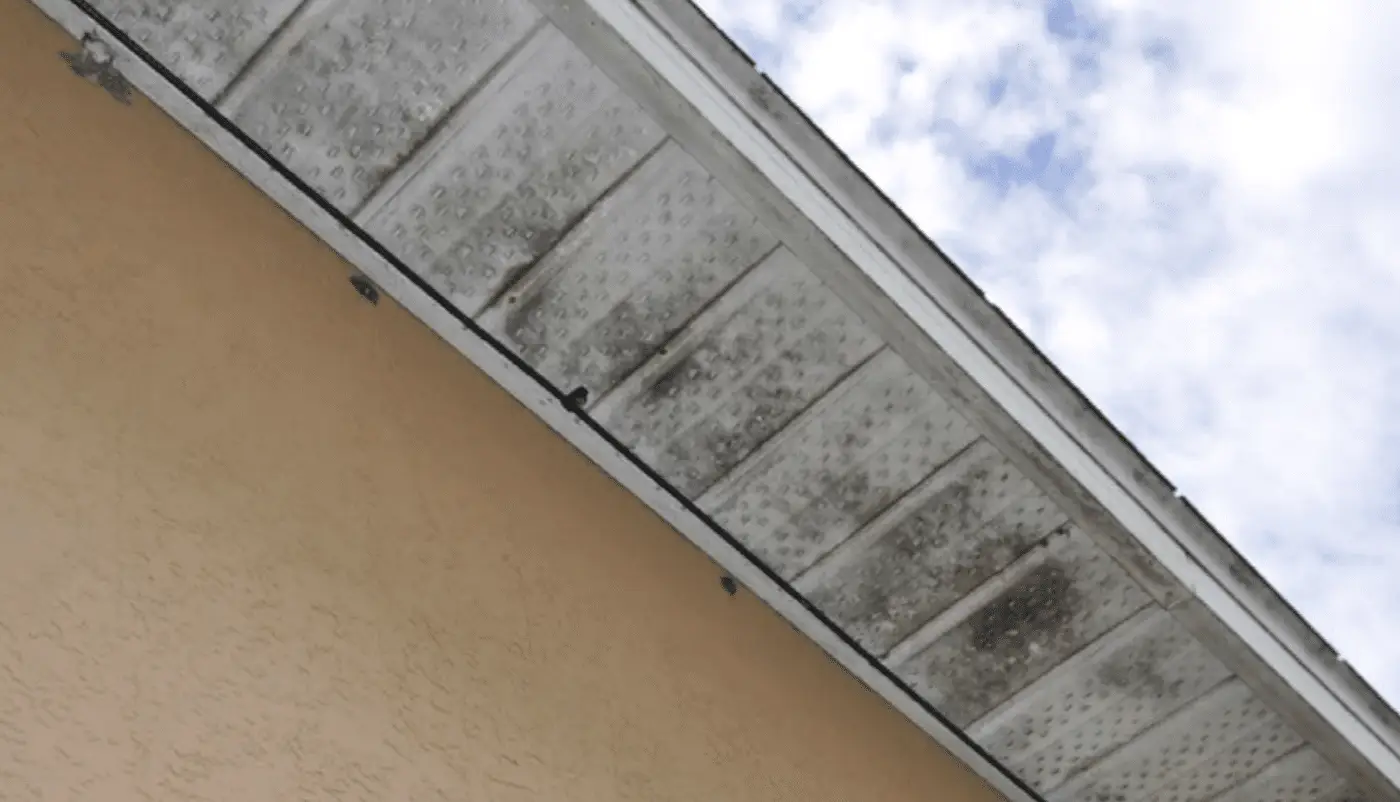
Fall leaves and debris combine with increased rainfall to create the perfect breeding ground for mold in your gutter system. As temperatures drop and moisture lingers, mold spreads quickly along gutters and soffits. Mold growth around gutters signals moisture problems:
- Mold on gutters indicates a potentially failing roof system.
- Moisture lingering in gutters creates conditions for mold development.
- Summer debris can clog gutter systems and trap water inside.
- Ice dams are likely to form during winter when moisture is already present.
- Ice dam formation can pull gutters away from your roof, causing extensive damage.
- New England roofing companies provide proper installation to prevent moisture issues.
4. Leaking Around Chimney
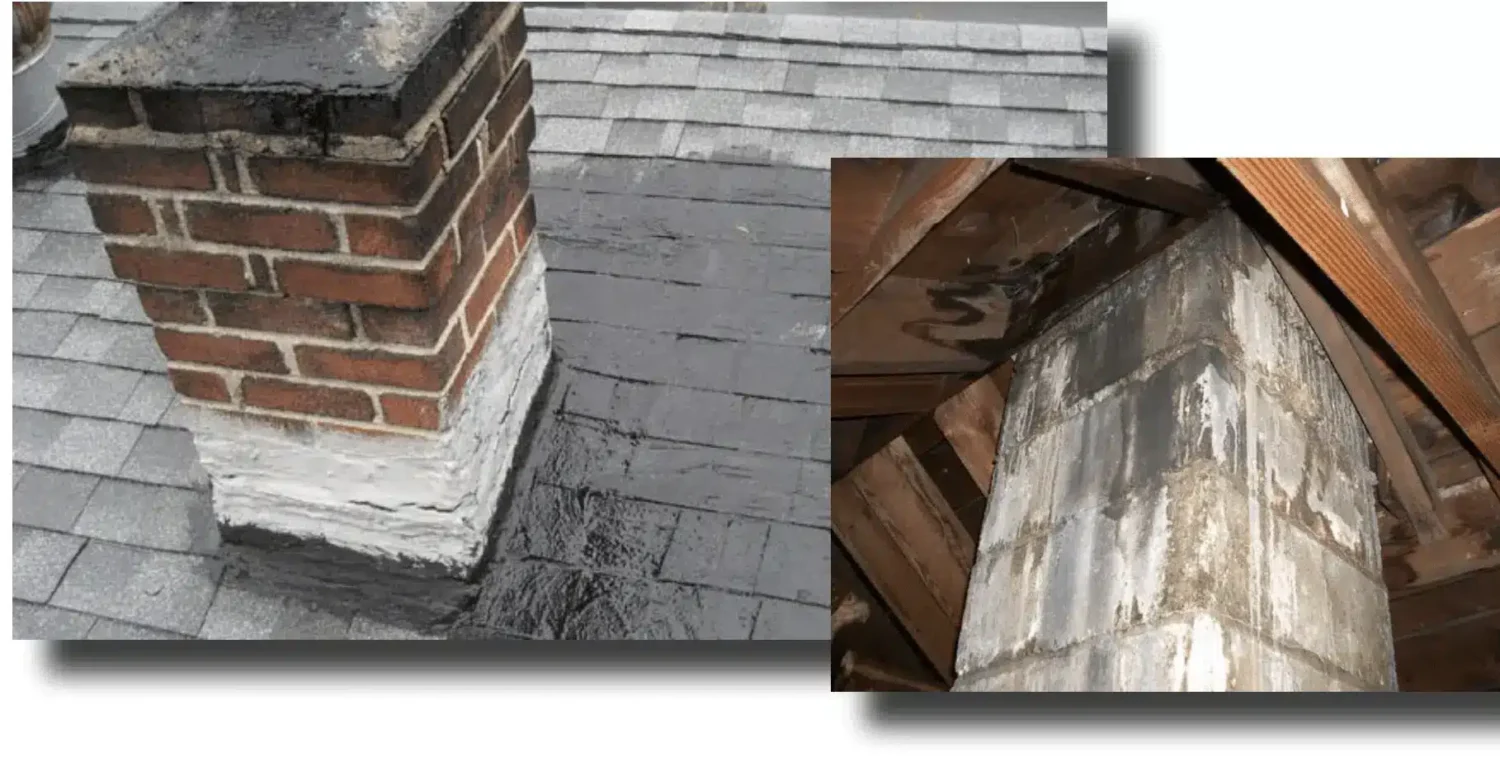
Cool autumn rains test your chimney’s weatherproofing as water finds its way through deteriorated flashing and sealant. The freeze-thaw cycle that begins in late fall causes existing cracks to expand, creating pathways for water infiltration. Chimney maintenance directly impacts your roof’s winter readiness:
- Leaky chimneys signal trouble with your overall roofing system.
- Autumn rain can seep through compromised chimney flashing and cause leaks.
- Proper chimney flashing is essential for protecting your home during winter.
- A 6-foot shield underlayer acts as protection against snow and ice.
- Custom-fitted flashing with proper caulking stops leaks at their source.
- Roofing contractors in Massachusetts properly seal chimneys to prevent future water intrusion.
5. Brown and Yellow Stains on the Ceiling
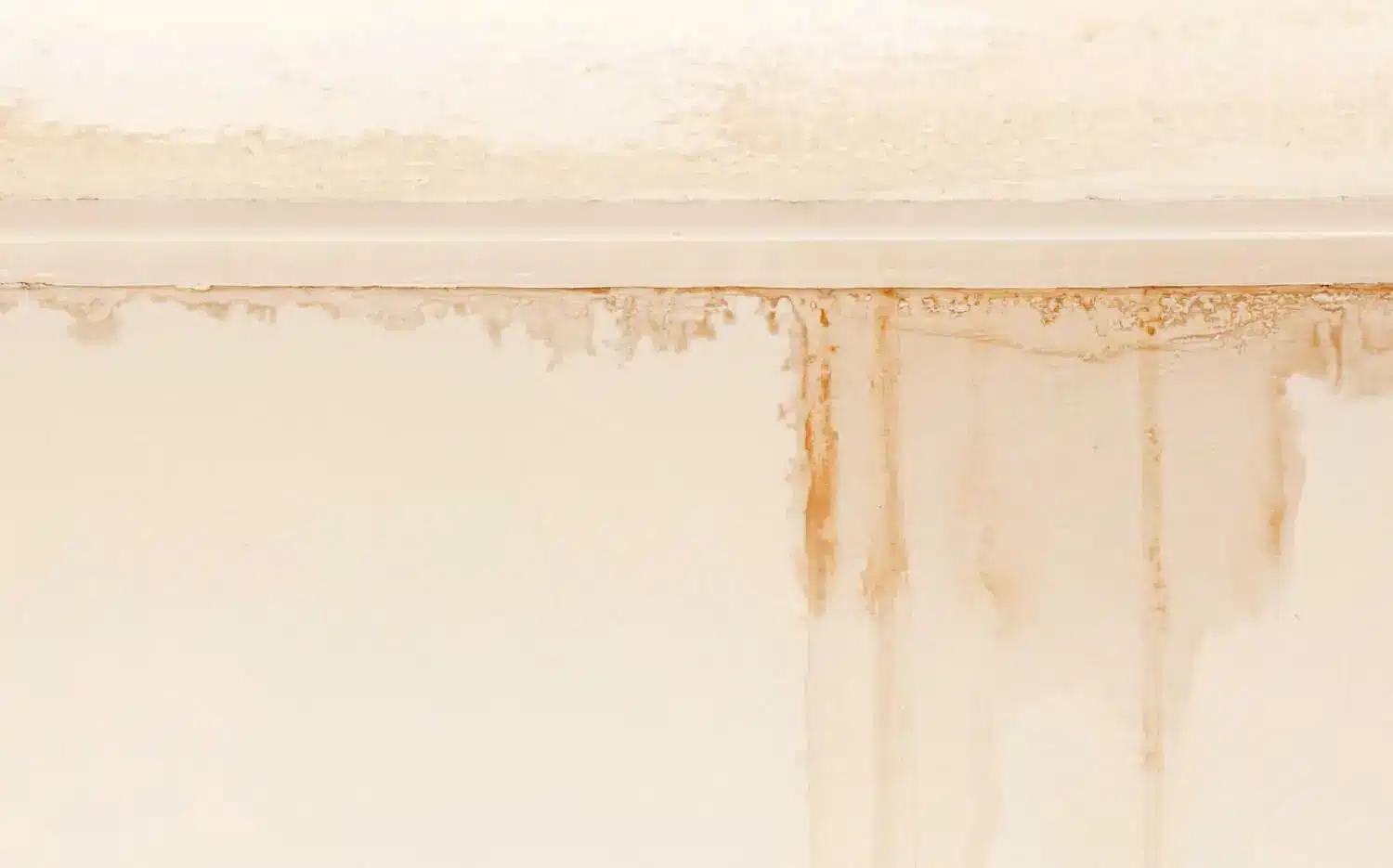
Persistent fall rains combined with compromised roofing materials allow water to penetrate your home’s interior. As temperatures drop, condensation issues worsen, and any existing leaks become more visible through ceiling discoloration. Ceiling stains indicate active roof leaks requiring immediate attention:
- Brown and yellow stains near chimneys or other areas reveal roof leaks.
- Missing or curled shingles commonly cause water infiltration and staining.
- Inadequate chimney flashing allows water to enter your home.
- Roof leaks promote mold growth in attic spaces over time.
- Untreated leaks eventually destroy drywall and compromise structural integrity.
- Identifying leak sources prevents extensive damage and costly repairs.
6. Mold in the Attic
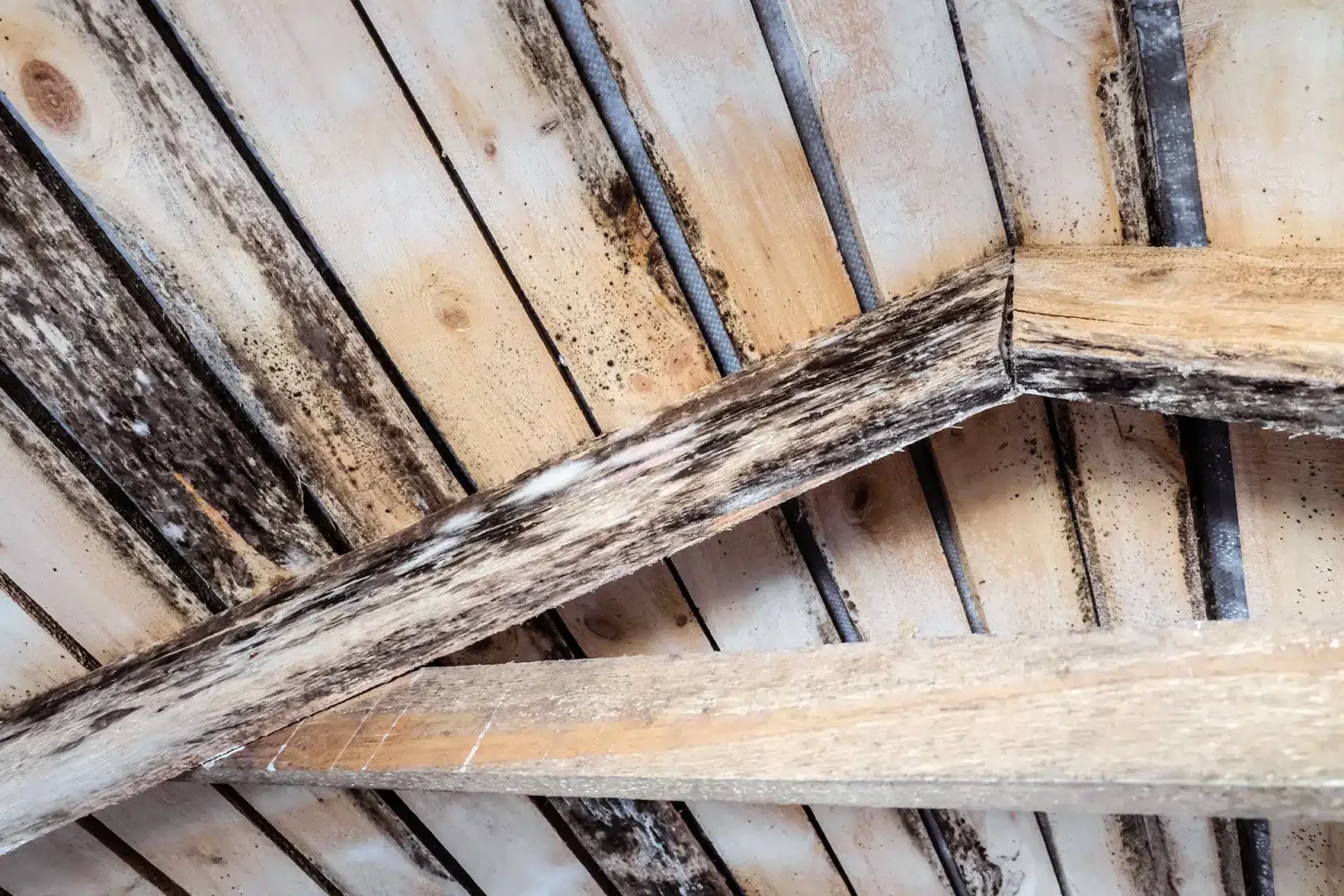
Fall’s combination of warm days and cool nights creates condensation in poorly ventilated attics. As outside temperatures drop and your heating system kicks on, warm moist air rises and meets cold roof surfaces, creating ideal conditions for mold growth. Attic mold reveals serious moisture and ventilation issues:
- Mold on attic ceilings and rafter beams indicates moisture intrusion.
- Winter snow predicted by Farmer’s Almanac will worsen existing moisture problems.
- Melting snow easily leads to additional mold growth in compromised attics.
- Moisture damage can cause rafter beams to rot and weaken over time.
- Attic mold suggests inadequate insulation throughout your home.
- Poor ventilation prevents proper air circulation and moisture control.
- Energy efficient roofing provides proper insulation to prevent mold and heat loss.
7. You Had Ice Dams Last Winter
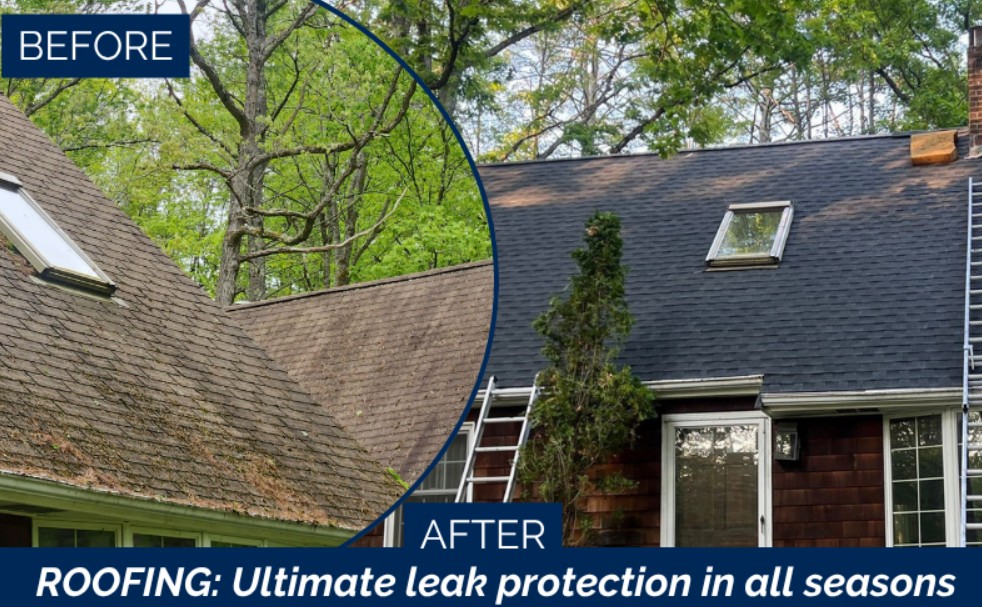
Fall weather provides the first test of whether your roof’s ventilation issues have been resolved since last winter. As temperatures dip below freezing at night and rise during sunny autumn days, the same conditions that cause ice dams begin to develop. Previous ice dams indicate your roof is not winter-ready:
- Ice dams are a major red flag that your roof needs professional attention.
- Poor ventilation causes attic temperatures to rise and melt roof snow.
- Melted snow trickles down to soffits and gutters where it refreezes.
- Snow layers on your roof insulate the attic and trap additional heat inside.
- The freeze-and-thaw cycle creates ongoing damage throughout winter months.
- Ice dams cause interior leaks, shingle destruction, and gutter separation.
- Proper ventilation prevents ice dam formation and protects your home.
Why Fall is the Best Time to Replace Your Roof
Autumn’s moderate temperatures and stable weather patterns create optimal conditions for roof installation that simply aren’t available during extreme summer heat or winter cold. The New England fall roofing season offers professional contractors the perfect window to complete quality installations efficiently. Fall’s unique weather advantages make this the best time to replace roof systems and prepare your home for winter:
- Moderate temperatures allow shingles to seal properly during installation.
- Stable autumn weather provides consistent working conditions without extreme heat or cold delays.
- Professional fall roofing contractors complete installations efficiently before winter complications arise.
- Autumn scheduling avoids the peak summer rush when contractors are heavily booked.
- Installing now prevents emergency repairs during harsh winter conditions when costs increase.
Working with Qualified Roofing Companies in New England
Timing matters significantly when it comes to urgent roof replacement before winter, as delaying necessary work puts your home at risk during the harshest weather months. Working with qualified professionals ensures your installation meets all manufacturer standards and protects your investment. Choosing experienced contractors familiar with regional weather makes all the difference:
- GAF certified roofing contractors near me ensure installations meet manufacturer specifications and warranty requirements.
- Experienced roof installation contractors near me understand New England’s unique weather challenges and freeze-thaw cycles.
- Qualified professionals recommend solutions specifically tailored to your home’s needs and exposure.
- Certified contractors provide warranties that protect your investment for years to come.
Choosing the Right Roofing Company
Finding the best roof replacement companies near me requires research into qualifications, experience, and customer satisfaction. Professional fall roof specialists bring expertise in managing seasonal installation challenges and timeline pressures. The right contractor makes informed recommendations about your roof’s condition:
- Experienced specialists assess whether your roof needs immediate replacement or can last another season.
- Professional contractors identify minor repairs that might extend your roof’s lifespan cost-effectively.
- Quality companies understand the urgency of completing projects before the first snowfall arrives.
- Reputable contractors provide honest evaluations rather than pushing unnecessary replacements.
Coastal Windows & Exteriors ranks as the #1 woman-owned exterior remodeler and the only roofing company in New England on Qualified Remodeler’s Top 500 list. Based in Beverly, MA, Coastal has climbed to #191 nationally, representing an impressive 42-position jump from its previous #233 ranking and more than 200 spots in just four years. Key distinctions that set Coastal apart:
- Ranks #4 overall among all remodeling companies in New England.
- Ranks #4 among privately owned exterior remodeling companies in New England.
- New England’s top-rated remodeler with the highest volume of verified reviews.
- Maintains a 4.8-star Google rating and A+ rating with the BBB.
- Family-owned business providing a local, one-on-one experience rather than a franchise model.
- Award-winning company offering the trust and reliability homeowners deserve.
- Extensive online presence and verified reviews demonstrate transparency and accountability.
Roofing Fall Guide: Frequently Asked Questions
What temperature is too cold to install a roof?
Temperature requirements are critical for proper installation:
- Most roofing manufacturers recommend installation when temperatures are consistently above 40°F.
- Shingle adhesives require warmth to properly seal and bond, making cold weather installations risky.
- Professional contractors monitor weather forecasts to schedule installations during optimal temperature windows.
Can you put a roof on in the fall?
Fall installation offers several advantages for homeowners:
- Fall is actually one of the best seasons for roof installation in New England.
- Moderate temperatures between 45°F and 85°F create ideal conditions for shingle adhesion.
- Contractors are often more available in fall compared to peak summer season.
- Completing installation before winter protects your home from harsh weather damage.
How often should a roof be replaced?
Roof lifespan depends on multiple factors:
- Asphalt shingle roofs typically last 20-30 years depending on quality and maintenance.
- Factors like weather exposure, ventilation, and installation quality affect lifespan.
- Annual inspections help identify when replacement becomes necessary before major failures occur.
What is the latest time in the year to install a roof before winter?
Professional roofing contractors can install roofs year-round:
- Experienced contractors have the expertise to install roofs in any season, including winter.
- Advanced installation techniques and materials allow for safe, quality installations throughout the year.
- While fall offers ideal conditions, there’s no cutoff time that prevents professional roof installation.
- Don’t delay necessary roof repairs or replacement—qualified contractors can protect your home regardless of season.
How does temperature affect roof installation in autumn?
Temperature fluctuations create specific challenges:
- Shingles become brittle in cold temperatures and may crack during installation.
- Adhesive strips on shingles activate properly only within specific temperature ranges.
- Morning frost can delay start times even when afternoon temperatures are suitable.
- Professional contractors adjust techniques and materials based on daily temperature variations.
Can frost delay my fall roofing project?
Frost can impact your installation timeline:
- Yes, morning frost can postpone installation start times by several hours.
- Frost must completely evaporate from roof surfaces before shingles can be applied.
- Experienced contractors plan for these delays and adjust schedules accordingly.
- Multiple frosty mornings can extend project timelines by several days.
How do you go about detecting hidden roof leaks before winter?
Early detection prevents costly damage:
- Check attic spaces for water stains, mold, or damp insulation.
- Inspect ceilings throughout your home for discoloration or sagging.
- Look for missing or damaged shingles from ground level after storms.
- Professional roof inspections use infrared technology to detect moisture intrusion.
- Address leaks immediately to prevent extensive damage during winter freeze-thaw cycles.
Get Your Home Winter-Ready with This Fall Roofing Guide from Coastal Windows & Exteriors
These roof maintenance tips will help you prepare for fall and any snow storms in the coming season. Getting your roof replaced now will keep leaks, mold, and ice dams at bay. A new roof will provide you with adequate ventilation and a safe, dry place to spend winter with your family.
Trust Coastal Windows & Exteriors for professional roofing solutions that protect what matters most. Our Fall Roofing Guide has shown you the warning signs—now let our experienced team provide the solutions. Contact us today for your free estimate and ensure your home is ready for whatever winter brings.
